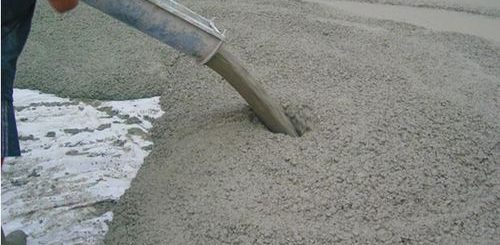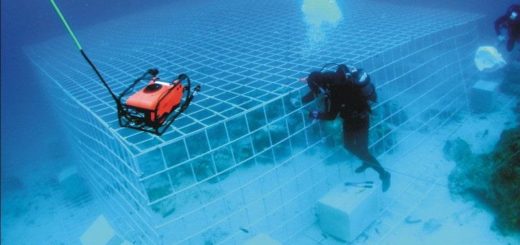Understanding Underdamped System
In the world of physics and engineering, underdamped system holds a significant place. These systems are characterized by their unique behavior and applications, making them a fascinating subject of study. In this article, we will delve into the intricacies of underdamped systems, exploring their definition, properties, real-world examples, and more. So, let’s embark on this journey of discovery.
What is Underdamped Systems
An underdamped system is a dynamic system commonly encountered in engineering, physics, and various other fields. It exhibits a unique behavior that sets it apart from other types of systems. Underdamped systems are characterized by their ability to oscillate and return to equilibrium after being disturbed, unlike overdamped systems that return to equilibrium without oscillation.
These systems are prevalent in a wide range of applications, from electrical circuits to mechanical systems, and are crucial for achieving specific performance goals. Understanding their behavior and properties is essential for engineers and scientists working in fields where dynamic systems play a significant role.
Characteristics of Underdamped Systems
Underdamped system exhibit several key characteristics that make them distinct:
- Oscillatory Behavior: Perhaps the most defining feature of underdamped systems is their tendency to oscillate. When subjected to a disturbance, these systems not only respond but also exhibit oscillations around the equilibrium point before settling down.
- Settling Time: Underdamped systems have a settling time, which is the time it takes for the system’s response to reach and remain within a specified range of the final equilibrium value. This settling time is shorter compared to overdamped systems, making underdamped systems desirable for applications requiring quick responses.
- Quick Response: Underdamped systems respond rapidly to changes in input. This characteristic is valuable in applications where dynamic adjustments are necessary to maintain stability and performance.
Mathematical Representation
Underdamped systems can be mathematically represented using second-order linear differential equations. The general form of the equation for an underdamped system is:
mẍ(t)+cẋ(t)+kx(t)=F(t)
Where:
- is the mass of the system.
- is the damping coefficient.
- is the spring constant.
- is the external force or input.
Solving this differential equation provides insights into the system’s behavior and response to different inputs.
Natural Frequency and Damping Ratio
Two fundamental parameters, the natural frequency () and damping ratio (), play a crucial role in defining the behavior of underdamped system:
- Natural Frequency (): The natural frequency represents the frequency at which the system would oscillate if there were no damping. It determines the speed of oscillation in the absence of external influences.
- Damping Ratio (): The damping ratio controls the rate of decay of oscillations in an underdamped system. A higher damping ratio leads to faster decay and a quicker return to equilibrium.
These parameters allow engineers and scientists to tailor the behavior of underdamped systems to specific requirements by selecting appropriate values for and .
Response of Underdamped Systems
Understanding the response of underdamped systems is crucial for designing and controlling them effectively. The response can be divided into two main components:
- Transient Response: This initial phase involves oscillations and takes place before the system settles down to a steady-state. The transient response is influenced by both and .
- Steady-State Response: Once the transient oscillations damp out, the system reaches a stable, steady-state response. The characteristics of this response depend on the input and the system’s natural frequency and damping ratio.
Engineers often analyze the transient and steady-state responses to ensure that underdamped systems meet performance criteria and operate as intended.
Applications in Engineering
Underdamped systems find applications in various engineering disciplines, including:
- Electrical Circuits: In electronic circuits, underdamped systems are used to design filters and amplifiers. Their oscillatory behavior can be harnessed to create specific frequency responses.
- Mechanical Systems: In mechanical engineering, underdamped systems are used in suspension systems for vehicles, shock absorbers, and vibration control. Their ability to respond quickly to bumps and road irregularities enhances ride comfort and vehicle stability.
- Control Systems: Underdamped systems are employed in control systems to achieve rapid responses while maintaining stability. These systems are used in industrial automation, robotics, and aerospace applications.
By understanding and harnessing the properties of underdamped system, engineers can design solutions that meet performance and safety requirements in diverse applications.
Comparing Underdamped, Overdamped, and Critically Damped Systems
To gain a comprehensive understanding of dynamic systems, it’s essential to compare underdamped systems with overdamped and critically damped systems:
- Overdamped Systems: Overdamped systems return to equilibrium without oscillations and have longer settling times. They are often used in applications where overshooting or oscillations are undesirable.
- Critically Damped Systems: Critically damped systems strike a balance between rapid response and minimal oscillations. They are used in applications where a quick but controlled return to equilibrium is necessary.
Understanding these different types of systems allows engineers to select the most suitable one for a given application, optimizing performance and stability.
Real-World Examples
Underdamped systems can be found in numerous real-world scenarios:
- Car Suspension: Vehicle suspension systems use underdamped shocks and struts to provide a comfortable ride. The oscillations in the system help absorb shocks from uneven road surfaces.
- Audio Equalizers: In audio equipment, underdamped systems are employed in equalizers to adjust the frequency response of sound signals, allowing for precise control over audio output.
- Aircraft Control: Aircraft control systems utilize underdamped characteristics to ensure rapid but stable responses to pilot inputs, enhancing safety and maneuverability.
- Seismometers: Seismometers, used for earthquake detection, often employ underdamped systems to detect and record ground motion accurately.
These examples showcase the versatility and importance of underdamped system in various industries and applications.
Tuning and Control of Underdamped Systems
Engineers often need to tune and control underdamped systems to achieve desired performance:
- Proportional-Integral-Derivative (PID) Control: PID controllers are commonly used to control underdamped systems. They adjust the system’s response by manipulating the control inputs based on feedback from sensors.
- Gain and Damping Adjustment: Modifying the gain and damping parameters of underdamped systems can fine-tune their behavior. This adjustment is critical in applications where precise control is required.
- Feedback Loops: Closed-loop control systems with feedback loops are employed to continuously monitor and adjust underdamped systems, ensuring they maintain stability and respond optimally.
The ability to control underdamped system is instrumental in achieving the desired performance characteristics in various engineering applications.
In conclusion, underdamped systems are intriguing and versatile entities that play a crucial role in engineering and physics. Their ability to oscillate while returning to equilibrium makes them indispensable in various applications.
Frequently Asked Questions (FAQs)
- What is the primary difference between underdamped and overdamped systems?
- Underdamped systems exhibit oscillatory behavior, while overdamped systems return to equilibrium without oscillation.
- How do natural frequency and damping ratio affect underdamped systems?
- The natural frequency determines the speed of oscillation, while the damping ratio controls the rate of decay in an underdamped system.
- Where can underdamped systems be found in everyday life?
- You can find underdamped systems in car suspension, electrical circuits, and many control systems.
- What are the challenges in controlling underdamped systems?
- Challenges include avoiding excessive oscillations and ensuring stability while achieving the desired performance.
- What does the future hold for underdamped system research?
- Future developments may focus on more advanced control strategies and applications in emerging technologies.



